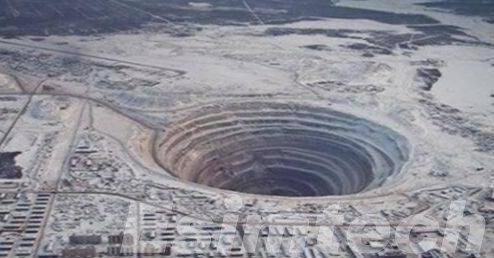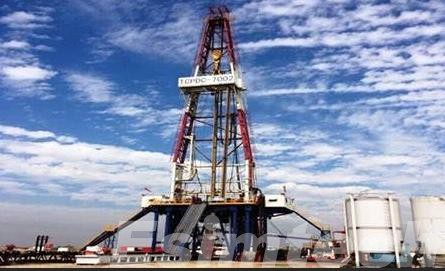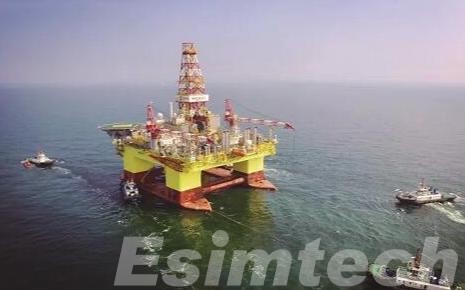The Role of Ultra-Deep Drilling in the Energy Transition
As the world seeks to decarbonize and transition to cleaner energy sources, conventional fossil fuels’ role is being re-evaluated. While renewable energy sources like wind, solar, and hydropower have captured much of the spotlight, the oil and gas sector still plays a crucial role in ensuring global energy stability. One of the key innovations in this sector, ultra-deep drilling, is increasingly relevant to the energy transition, offering both challenges and opportunities as we navigate a future where sustainability and energy security are paramount.
The Energy Transition and the Need for New Energy Sources

The global push for a transition to sustainable energy sources is accelerating as the world confronts the urgent challenges posed by climate change and environmental degradation. This energy transition is characterized by a shift from fossil fuels—such as oil, coal, and natural gas—toward cleaner, renewable sources like solar, wind, and hydropower. However, despite the increasing adoption of renewables, fossil fuels still account for a significant portion of global energy production and consumption.
A key challenge in the energy transition is ensuring a stable and reliable energy supply while reducing carbon emissions. While renewable energy sources are rapidly expanding, their intermittent nature—solar power is only available when the sun shines, and wind power depends on wind patterns—means that traditional energy sources will continue to play a critical role in the global energy mix for the foreseeable future. This is where ultra-deep drilling can provide a bridge, by allowing for more efficient and sustainable extraction of hydrocarbons, such as oil and gas, from previously inaccessible reserves.
The Potential of Ultra-Deep Drilling in Oil and Gas
Despite the increasing emphasis on renewable energy, oil and gas will likely remain a crucial part of the global energy mix for the foreseeable future. Ultra-deep drilling, which involves drilling into reservoirs located thousands of feet below the Earth’s surface, offers a promising avenue for expanding oil and gas production while minimizing environmental impacts.
What is Ultra-Deep Drilling?

Ultra-deep drilling is a specialized branch of the oil and gas industry that involves drilling into reservoirs located thousands of feet below the Earth’s surface. These reservoirs are often characterized by extreme pressure and temperature conditions, making them challenging to access and exploit.
The term “ultra-deep” is typically used to describe drilling operations that target reservoirs located more than 15,000 feet below the Earth’s surface. However, the exact definition can vary depending on the region and specific geological conditions.
Ultra-deep drilling requires advanced technology and expertise to overcome the unique challenges associated with these deep reservoirs. These challenges include:
- High Pressure and Temperature: The extreme pressure and temperature conditions found in deep reservoirs can cause the drilling fluid to become less effective and can lead to equipment failures.
- Borehole Stability: The weight of the drilling column can cause the borehole to collapse, especially in unstable rock formations.
- Well Control: Managing well pressure and preventing uncontrolled flow of hydrocarbons is crucial in ultra-deep drilling operations.
To address these challenges, operators must use specialized drilling equipment, advanced well control techniques, and careful planning and execution.
Benefits of Ultra-Deep Drilling in the Energy Transition
Ultra-deep drilling offers several key benefits in the context of the energy transition, particularly as the world moves toward reducing carbon emissions while maintaining a stable energy supply:
- Access to Untapped Reserves: One of the primary advantages of ultra-deep drilling is its ability to unlock vast reserves of hydrocarbons that have yet to be exploited. These reserves are critical for ensuring energy security during the transition to renewables, especially as many traditional oil fields approach depletion. This helps to stabilize the energy market and reduces the need for exploratory drilling in more environmentally sensitive areas.
- Facilitating Natural Gas as a Transitional Fuel: Natural gas, often accessed through ultra-deep drilling operations, plays a key role in the energy transition. As a cleaner-burning fossil fuel compared to coal and oil, natural gas can act as a bridge fuel by reducing carbon emissions while the world builds out renewable energy capacity. Ultra-deep drilling ensures that natural gas supplies remain adequate to support this transition period.
- Supporting Carbon Capture and Storage (CCS): Another significant benefit of ultra-deep drilling is its potential to aid in carbon capture and storage (CCS) initiatives. CCS is a vital technology in reducing carbon emissions, where captured CO2 is injected deep underground into geological formations for long-term storage. Many ultra-deep reservoirs can be repurposed as CO2 storage sites, contributing to emissions reduction efforts and aligning with the goals of the energy transition.
- Minimizing Environmental Footprint: Technological advances in ultra-deep drilling have led to more efficient and environmentally sensitive extraction techniques. Innovations like directional drilling allow operators to reach multiple targets from a single well, reducing the physical footprint of drilling sites. Additionally, improved monitoring technologies help detect issues in real-time, minimizing the likelihood of accidents such as oil spills or blowouts, which can have devastating environmental impacts.
- Prolonging the Life of Existing Fields: Ultra-deep drilling is not only about tapping new reserves; it also enables oil and gas companies to extract more hydrocarbons from existing fields by reaching previously inaccessible layers. This extends the productive life of mature fields and reduces the need for exploring new drilling locations, helping to limit the environmental disruption associated with new developments.

By accessing these deep, hard-to-reach resources, ultra-deep drilling can provide a reliable energy supply during the transition to cleaner sources while supporting technologies like CCS that are crucial for reducing the industry’s environmental impact. This makes it a critical tool for balancing current energy needs with long-term sustainability objectives.
Technological Innovations Driving Ultra-Deep Drilling
Advancements in technology have been pivotal in unlocking the potential of ultra-deep drilling, enabling the industry to overcome significant technical challenges associated with extracting hydrocarbons from extreme depths. Here are four key innovations that are driving the evolution of ultra-deep drilling:
Robust Drilling Rigs and Advanced Offshore Platforms
Ultra-deep drilling requires specialized rigs and platforms capable of handling extreme environments, both onshore and offshore. In offshore settings, rigs must be equipped to operate in water depths exceeding 1,500 meters (5,000 feet) and withstand high pressure and temperature conditions at the wellhead.
- Floating Platforms and Dynamic Positioning Systems: Modern ultra-deepwater drilling rigs are often floating structures, such as semi-submersible rigs or drillships. These are equipped with dynamic positioning systems, which use GPS, thrusters, and computer algorithms to keep the rig stationary even in rough seas. This precision allows for more accurate drilling and reduces the risk of damaging sensitive underwater ecosystems.

- Dual Activity Rigs: New rig designs, such as dual activity rigs, allow for multiple drilling and well-completion activities to take place simultaneously. This significantly improves operational efficiency by reducing downtime and minimizing the number of trips the drill bit needs to make to the surface.
These technological advancements in rig design not only improve efficiency but also enhance safety and reduce the environmental footprint of ultra-deep drilling operations by limiting disturbances to the surrounding ecosystem.
Enhanced Seismic Imaging Technologies
Understanding deep underground geological formations is essential for the success of ultra-deep drilling. Recent advancements in seismic imaging technologies have revolutionized exploration, providing a clearer and more detailed view of subsurface structures. Key developments include:
- 3D and 4D Seismic Surveys: Traditional 2D seismic imaging is now enhanced by 3D and 4D (time-lapse) techniques, offering highly detailed maps of the subsurface. These tools allow geoscientists to visualize intricate geological formations, locate potential hydrocarbon reservoirs, and assess risks more effectively before drilling.
- Full Waveform Inversion (FWI): This cutting-edge technique extracts more precise information about subsurface characteristics by analyzing the entire seismic wave. FWI enhances the accuracy of geological models, supporting more informed decisions about drilling locations and strategies.
- Machine Learning and AI Integration: The application of machine learning to seismic data analysis accelerates the interpretation of complex datasets. These algorithms can detect patterns and anomalies that may be overlooked by human analysts, improving the accuracy of identifying optimal drilling sites.
Downhole Sensors and Real-Time Monitoring
The development of advanced downhole sensors has revolutionized the way drilling operations are monitored and managed. These sensors provide critical data that can improve safety and efficiency in ultra-deep drilling:
- Real-Time Data Transmission: Downhole sensors collect data on temperature, pressure, and fluid composition in real time, transmitting this information to surface teams. This capability allows operators to make immediate adjustments to drilling parameters, enhancing safety and performance.
- Smart Drilling Technology: Advanced sensors can also monitor drilling conditions, detecting issues like vibrations or abnormal pressure changes that could indicate problems. Smart drilling technology uses this data to automatically adjust drilling parameters, optimizing the drilling process and preventing potential failures.
- Downhole Robotics: Innovations in robotics have introduced autonomous tools that can perform maintenance and repairs deep within the wellbore. These robotic systems can navigate challenging environments, reducing the need for human intervention and minimizing downtime during drilling operations.
Drilling Simulators and Automated Drilling Systems
One of the most impactful innovations in ultra-deep drilling is the use of drilling simulators and automation technologies to train personnel and enhance operational efficiency. As the complexities of ultra-deep drilling increase, so does the need for high-level expertise and precision.
- Drilling Simulators: These advanced systems replicate real-world ultra-deep drilling conditions, allowing engineers and operators to train in a controlled environment. Simulators can model everything from the behavior of the drill bit to well pressure and fluid dynamics, helping teams prepare for the various challenges that may arise during actual operations. By practicing in a simulated environment, crews can improve their decision-making skills, reduce human error, and become better equipped to handle emergencies, such as blowouts or equipment malfunctions.

- Automated Drilling Systems: Automation has also made a significant impact on ultra-deep drilling. Automated systems control key aspects of the drilling process, such as adjusting the drill bit’s speed and pressure, managing mud flow, and ensuring optimal drilling trajectories. These systems are often equipped with machine learning algorithms that allow the equipment to “learn” from previous drilling operations, improving efficiency and accuracy over time. Automation reduces the need for manual interventions in hazardous conditions, enhancing both safety and productivity.
These technological innovations are essential for overcoming the complexities associated with ultra-deep drilling. As the industry continues to evolve, these advancements will not only enhance the efficiency and safety of drilling operations but also contribute to a more sustainable approach to hydrocarbon extraction in the context of the global energy transition.
Summary
In conclusion, while the energy transition is aimed at reducing reliance on fossil fuels, ultra-deep drilling can play an important role in ensuring energy security in the interim. By accessing previously unreachable reserves and supporting technologies like carbon capture and storage, ultra-deep drilling can help bridge the gap between today’s energy demands and tomorrow’s renewable future. Technological advancements will continue to drive its potential, making it a critical component of the evolving energy landscape.

